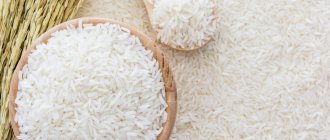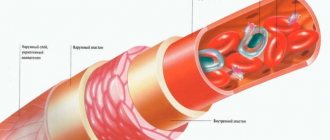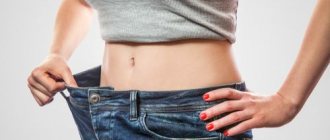Obtaining defibrinated blood. The animal’s blood is poured into a sterile flask with glass beads and shaken continuously for 10–15 minutes. As a result of shaking, fibrin in the blood precipitates, enveloping the beads, and defibrinated blood, poured into another flask or test tube, loses its ability to clot.
Preparation of a suspension of erythrocytes. To remove fibrin films, defibrinated blood is filtered through a three-layer gauze filter. The filtrate is poured into centrifuge tubes and centrifuged at 2000–3000 rpm for 10–15 minutes. Red blood cells settle to the bottom of the test tube, and the transparent, slightly yellowish plasma forms a super-sedimentary layer. After centrifugation, the liquid level in the test tube is marked with a pencil, the plasma is separated with a Pasteur pipette, the red blood cells are washed by adding a sterile isotonic sodium chloride solution to the mark, and centrifuged again. The red blood cells are washed with the addition of a fresh solution 2–3 times so that the last portion of the washing liquid is colorless.
A 3 or 5% suspension is prepared from washed erythrocytes by adding 97–95 ml of isotonic sodium chloride solution to 3–5 ml of erythrocytes, respectively (to obtain smaller amounts of suspension, the volumes of both ingredients are reduced by the same number of times).
The red blood cell suspension can be stored in the refrigerator at 3–4 °C for 5–6 days.
Preparation of blood serum. The blood collected in a sterile test tube is closed with a cotton-gauze stopper and placed in a thermostat or water bath adjusted to 37 °C for 20–30 minutes, since blood clots faster and better in warmth. When clotting, the blood clot usually sticks to the walls of the tube. Therefore, after keeping in a thermostat, the clot is separated from the walls of the test tube by a circular movement of the capillary with a sterile Pasteur pipette or a sterile glass rod.
After separating the curd, the whey is placed in the refrigerator at a temperature of 3–4 °C. Within 3–4 hours, the serum is usually completely separated and can be collected with a sterile Pasteur pipette. To ensure that the contents of the test tube are clearly visible, a Pasteur pipette is connected to a glass tube - a “mouthpiece” (a rubber tube 20–25 cm long). This avoids the tip of the pipette coming into contact with the blood clot and the release of red blood cells into the serum.
The pink-colored serum is centrifuged at 2000–3000 rpm for 10–15 minutes to precipitate blood cells.
When blood is taken soon after feeding animals, as well as when repeated bloodletting at short intervals, lipemia sometimes occurs, i.e. the appearance of excess fatty substances in the blood. Sera obtained during lipemia are cloudy (chylous), sometimes opalescent, and this makes it very difficult to read diagnostic reactions, especially precipitation reactions. To avoid obtaining turbid sera, blood from animals is taken on an empty stomach. Clearing of lipemic plasma also occurs with the introduction of animal heparin into the bloodstream, which helps to increase the concentration in the blood of an enzyme called clearing factor. For this purpose, rabbits weighing 2–2.5 kg are injected with 60 mg of heparin into the marginal vein of the ear 1–1.5 hours before bleeding.
Blood serum can be obtained by centrifugation. In the serum drained from the sediment, a short time after centrifugation, a fibrin clot is formed, which is compacted when the blood is mixed with a glass rod. This clot is then removed. In some cases, fibrin does not completely disappear from the serum. To remove fibrin residues and determine the completeness of its removal, a few drops of thrombin are added to the serum. The serum freed from fibrin is filtered through asbestos filters. The serum obtained in this way is completely transparent and has no signs of opalescence.
Preparation of citrated blood. The blood obtained from the heart or vein is poured into a test tube with a 5% sodium citrate solution (10 ml of blood, 1 ml of sodium citrate). Citrated blood does not clot.
Preparation of blood plasma. Citrated blood is placed in the refrigerator for 18–20 hours or centrifuged. As a result, a transparent layer of yellowish liquid, plasma, forms above the sediment of red blood cells.
Healing serum
Therapeutic serum is a blood plasma preparation without fibrinogen, which contains ready-made antibodies that fight pathogens of various diseases when the body itself does not have time to produce antibodies. The immune system uses them to identify foreign objects (viruses and bacteria) and neutralize them.
For the prevention and treatment of certain infectious diseases, sera from animals (most often horses) immunized artificially are used. The blood serum of people who have had an infectious disease or have been artificially immunized with vaccine preparations is also used as a therapeutic and prophylactic serum. Immune sera also perform a diagnostic role and are used in laboratories to identify microorganisms isolated during analysis. Diagnostic serum is the serum of immunized rabbits.
Therapeutic serums are more effective than vaccine preparations. They are able to quickly create passive immunity.
The introduced immunoglobulins instantly neutralize pathogenic microorganisms, as well as toxic products resulting from their vital activity.
But heterogeneous, that is, foreign sera, also have a drawback - the effect of passive immunity caused by it is short-lived. Immunoglobulins are eliminated from the body after 1-2 weeks. This is due to the natural process of protein breakdown, as well as the action of the resulting antibodies.
A longer lasting effect is obtained by injection of homologous serum (human serum). In this case, antibodies circulate in the human body for 4-5 weeks. This is due to the fact that the injected proteins are destroyed more slowly.
Classification of medicinal serums
Based on the direction and characteristics of the action of medicinal serums, they are divided into:
- antibacterial;
- antivirus;
- antitoxic;
- homologous (from human blood);
- heterogeneous (serum or immunoglobulins).
Antibacterial serums are produced by hyperimmunizing horses with the appropriate killed bacteria. These drugs contain antibodies that have opsonizing, lytic, and agglutinating properties. These serums are not very effective, so they are not widely used. They are classified as non-titrated drugs because there is no generally accepted unit for measuring their therapeutic effect. The purification and concentration of antibacterial serums is carried out by a method based on the separation of protein fractions and the isolation of active immunoglobulins using ethyl alcohol at a low temperature. This is called the cold hydroalcoholic deposition method.
Antiviral sera are obtained from the serum of animals immunized with viruses or strains of viruses. Some of these drugs are made using the hydroalcoholic precipitation method.
Antitoxic serums (antitetanus, antidephthyriasis, antigangrenosis, antibotulinum) are obtained by immunizing horses, using increasing doses of toxoids, and then the corresponding toxins. The preparations are subjected to purification and concentration, and are monitored for safety and non-pyrogenicity. After this, the serum is titrated, that is, it is determined how many antitoxins are contained in one milliliter of the drug. To measure the amount of antibodies or specific activity of serum, a method is used based on their ability to neutralize the corresponding toxins. There is a unit of measurement for drug activity adopted by WHO. These are the International Antitoxic Units. To titrate antitoxic serums, one of three methods is used: according to Rayon, Roemer or Ehrlich.
Immunoglobulins
Immunoglobulins (homologous drugs) are made from human blood into two types: anti-measles and targeted drugs. Such immunoglobulins have an advantage over heterogeneous ones because the antibodies in them are able to circulate in the body for a longer time and are almost non-reactogenic. These drugs usually do not cause adverse reactions. Heterogeneous sera may cause anaphylactic shock or serum sickness.
To obtain measles immunoglobulin, donor, placental or abortion blood is used, containing antibodies not only against the measles virus, but also against hepatitis, influenza, whooping cough pathogens, polio and a number of other bacterial and viral infections.
Volunteers are recruited to produce targeted immunoglobulins. Their blood is specially immunized against a specific infection. Such drugs are characterized by an increased concentration of antibodies. Targeted immunoglobulins are obtained for the treatment of rabies, influenza, smallpox, tetanus, tick-borne encephalitis, and staphylococcal infections.
Whey proteins - whey protein
Whey protein is the most popular protein source because it has the highest biological value and is quickly absorbed. Whey is considered the most complete source of protein because it contains high concentrations of nine essential amino acids that the body cannot synthesize. Thus, whey protein is great for muscle development.
The following whey protein compositions are distinguished:
Whey Protein Isolate
– Protein powder of the highest quality. This is an ideal product for those who do not want to sacrifice protein quality. The pure powder form has a protein content of at least 90%, minimal fat (<1%) and carbohydrates, and is lactose-free or low-lactose. It is recommended for supplementing protein intake and as a quick source of protein after exercise and is ideal to include in your diet.
Whey protein hydrolyzate.
Depending on the degree of hydrolysis, the size of the protein chains can be controlled.
The more peptide, the shorter the chain and the faster the protein is absorbed. Recommended to be taken in the morning, before or shortly after physical activity. Ideal for the muscle building phase. Protein content 80-90% Whey concentrate – is the most commonly used. It can be obtained by concentration from whey protein. It contains significantly more fat and carbohydrates than whey isolate, so it has a lower protein content (70-80%). It is recommended to increase muscle mass and include it in the overall diet.
Production of whey powder
This is a basic technological process in which significant amounts of lactose and fat are removed from whey, after which whey protein is formed through a high-temperature drying process. This process is used for cheaper whey concentrates where the protein, due to its high temperature, is highly denatured and has lower bioavailability than whey powders produced by a more expensive process.
Using serum?
- Whey is a great base for baking, cooking or fitness.
- You can make a fruit smoothie from it.
- Can be used in soups or boiled compotes.
- You can cook dough and rice with it, as well as potatoes.
- Meat marinated in whey will be very tasty and crumbly.
- When baking, it can be used instead of water, you can make bread, cakes, dough, pizza and even waffles.
pros
- Whey contains 80% of milk minerals (Ca, Fe, Mg, P, K, Na, Zn, Cu, Mn, Se).
- Vitamins: A, C, B1, B2, B6, B12.
- Source of protein.
- The ratio of whey, lactose and protein is very similar to breast milk.
- It supports the functioning of the liver and digestive system.
- It helps intestinal peristaltic movement, promotes the balance of intestinal flora, thereby reducing intestinal complaints and improving well-being.
- It contains valuable essential and non-essential amino acids that are necessary for muscle development.
- It can help with allergies and weak immune systems.
- Useful for diseases and inflammation of the joints.
- Great when dieting, helping prevent muscle breakdown in addition to keeping your carb and calorie intake low.











